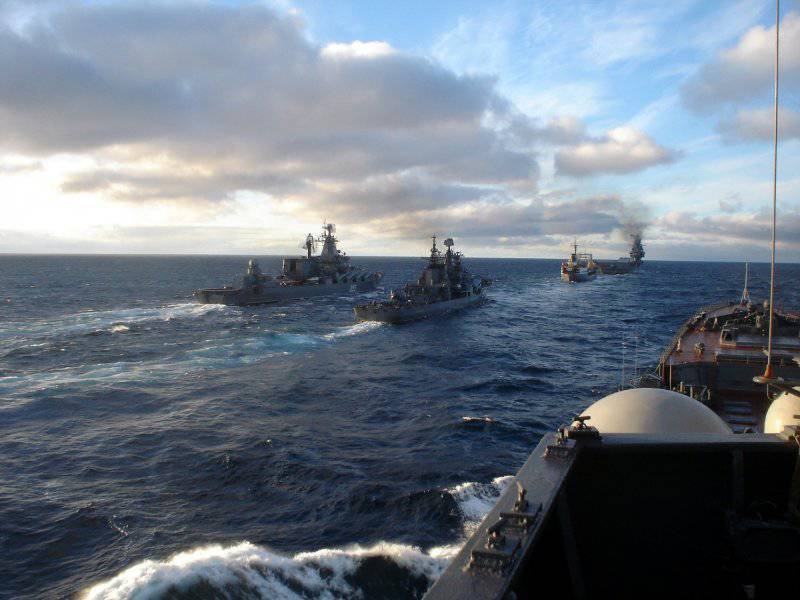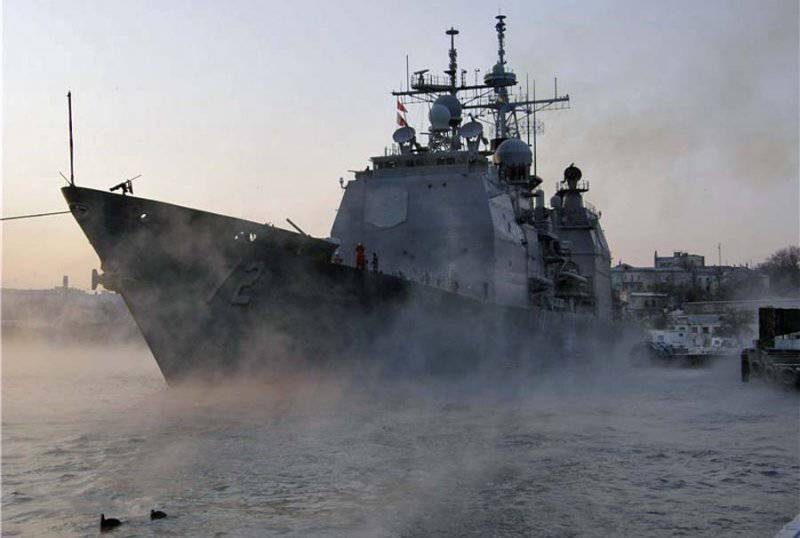Unwanted guests from the sea

The most remarkable and at the same time dangerous area for patrolling American ships is the Black Sea. According to various estimates, the total duration of their stay in the neutral waters of this sea and the ports of friendly countries is 280-300 days in a year. Famous journalist A. Karaulov, without specifying a particular year, names the number in 287 days. The American patrol of other regions alongside Russian territorial waters is proceeding with a slightly lower intensity. Regardless of the exact numbers and official reasons for such a stay, this situation looks ambiguous and therefore attracts the attention of Russian military and diplomats. At the same time, from a legal point of view, the situation is very normal. One side enjoys the right to hike in neutral waters, and the other has to watch it and take appropriate measures, but on its own territory.
Despite the complexity of the situation, the prerequisites for it are simple and understandable. The entry of American or NATO ships into the waters of one or another sea has several bases under it. The first is a show of strength. Even one modern warship is capable of delivering a lot of trouble to the enemy, not to mention a full-fledged strike group. A call at sea or at a port clearly shows the ability of the Navy to quickly come to the required area and carry out combat work in it. Secondly, such campaigns are part of the diplomatic game. If the ships of a certain country came to a certain sea, then this can only mean one thing: it has certain views of the region. Accordingly, local small states may perceive such a campaign as a kind of hint. A large country - in this case the USA - shows them that it makes sense to cooperate in economic, military, etc. spheres. Thirdly, any trip in the most beneficial way affects the experience of sailors. If in its course there will be any training events, etc., then the benefit for fleet significantly increase.
In general, by paying with fuel, food and finance, any sufficiently developed country can solve several problems at once. Strictly speaking, this is exactly what the Americans are doing in the Black Sea and other waters near the Russian borders. It is worth noting, not only from the Russian. The United States has its interests almost all over the world and therefore is trying to distribute its naval forces throughout the planet. Naturally, Europe and Asia, for obvious reasons, are receiving more attention than other continents. If we add to this the longest maritime border in the world belonging to Russia, then there are no questions left about American motives.
Occasionally, some media outlets refer to statements by some US senators and big businessmen regarding the future of a number of maritime routes. For example, they are interested in the northern sea route, as well as the route from the Baltic to the Black Sea. They are interesting enough for both business and military purposes, and therefore attract special attention. Using these routes allows you to save a lot of time on water transportation and, as a result, fuel, money and energy. Thus, patrolling warships in the waters of the Black and Northern Seas also has another basis related to the protection of trade routes. In addition, at the same time, a convenient “bridgehead” is provided for accommodating ships with missile defense missiles. The main routes of intercontinental ballistic missiles aimed at American objects run precisely through the waters of the Arctic Ocean. Therefore, to ensure their security, the United States may well use the opportunity.
It is also necessary to consider the types of American ships that are constantly near Russia. These are mainly Ticonderoga cruisers and Arleigh Burk destroyers, the most popular in the US Navy. Their predominance is primarily due to the amount. According to the Tikonderoga project, 27 cruisers were built, and the total number of destroyers of the Arly Burk type currently exceeds six dozen. Moreover, the destroyers are still in production, and in the future their number will only increase. However, in the case of patrolling near Russian territorial waters, not quantity, but quality is of much greater interest. Both types of ships carry universal vertical missile launchers. This means that the ammunition can be selected depending on the current situation. The modularity of launchers allows you to transport and use anti-aircraft, anti-ship, anti-submarine, etc. rockets. Thus, on board one ship can be a fairly wide range of weapons, as they say, for all occasions. Accordingly, any such ship becomes a universal means of warfare and poses a threat to the ships and ground objects of the enemy.
In this situation, Russia can take several steps at once. The simplest and most effective option seems to be the use of diplomatic “levers”. Theoretically, by pressing on some neighboring states, you can get rid of the so-called. visits of goodwill and, as a result, slightly reduce the stay of foreign ships in the vicinity of our borders. The second way to counter a possible threat — it can be implemented simultaneously with a diplomatic one — is to build up the corresponding forces in the region. Since the matter concerns cruisers and destroyers with missile complexes for various purposes, it is necessary to prepare in several directions at once. Ideally, in the area of the possible appearance of ships of the likely enemy should be on duty their ships and multipurpose submarines. In addition, you will need to create an anti-aircraft missile "shield" over the area, so that the ships could not attack ground targets.
It is easy to see that both ways of confronting a possible threat relate to the development of their own armed forces. As a matter of fact, this method can solve a whole range of problems at once. But he is not a panacea. As recent shows storyThe buildup of forces of one of the parties may lead to the beginning of an arms race and its not always pleasant and useful consequences. Nevertheless, it is clear from the history of the last century that only developed armed forces can effectively resist and deter a potential enemy, and also not allow him to come close to his territory.
On the materials of the sites:
http://globalsecurity.org/
http://defense-update.com/
http://moment-istini.ru/
http://flot.com/

Information